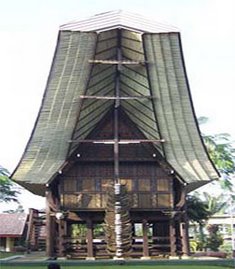Sumba is an island in Indonesia, and is one of the Lesser Sunda Islands. It has an area of 11,153 km², and the population has been estimated as between 350,000 and 425,000. There is a dry season from May to November and a rainy season from December to April. Historically, this island exported sandalwood.
To the northwest of Sumba is Sumbawa, to the northeast, across the Sumba Strait (Selat Sumba), is Flores, to the east, across the Savu Sea, is Timor, and to the south, across part of the Indian Ocean, is Australia. It is in the province of East Nusa Tenggara. The largest town on the island is Waingapu, with a population of about 10,700.
Before colonization, Sumba was inhabited by several small ethnolinguistic groups, some of which may have had tributary relations to the Majapahit Empire. In 1522 the first ships from Europe arrived, and by 1866 Sumba belonged to the Dutch East Indies, although the island did not come under real Dutch administration until the twentieth century.
The Sumbanese people speak a variety of closely related Austronesian languages, and have a mixture of Malay and Melanesian ancestry. Twenty-five to thirty percent of the population practises the animist Marapu religion. The remainder are Christian, a majority being Dutch Calvinist, but a substantial minority being Roman Catholic. A small number of Sunni Muslims can be found along the coastal areas.
References
1. From Wikipedia, the free encyclopedia
External links
• (Indonesian) Anahumba portal
• Sumba deciduous forests (World Wildlife Fund)
• Sumba Foundation
• Textiles of Sumba
• Detailed map
Langganan:
Posting Komentar (Atom)

Tidak ada komentar:
Posting Komentar